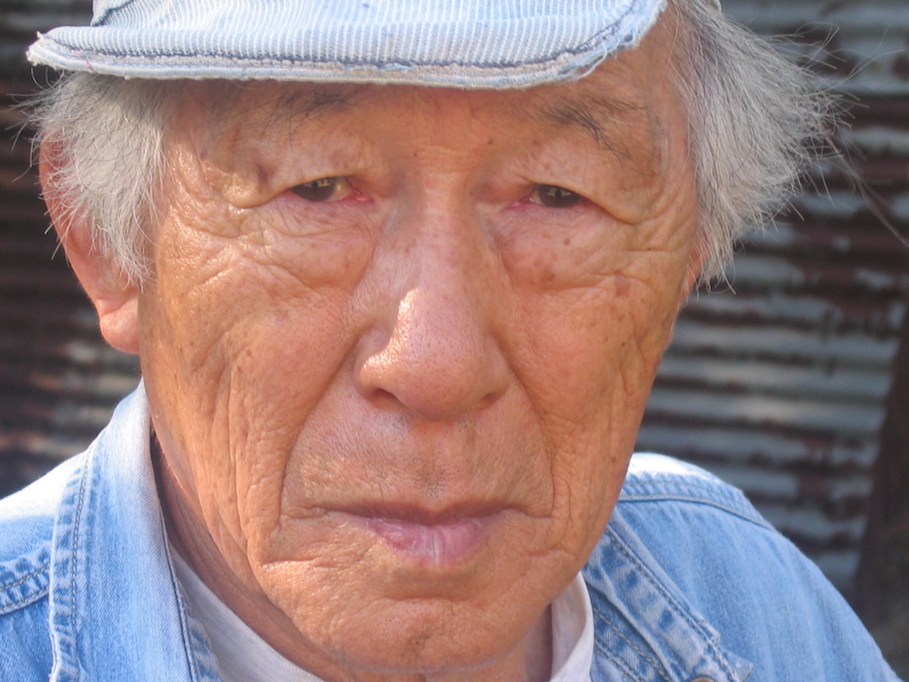A LIFE
Yasuo Mizui : The Artist
Yasuo Mizui entered into Kobe University in 1944.During World War II, he worked as technician at a company and learned casting. After his graduation in 1947, he entered Tokyo University of the Arts and majored in Sculpture. He was taught by Kazuo Kikuchi and Hirakushi Denchū. The reason of shifting his interest from mechanical engineering to sculpture was because he hoped of possibility of power of art, which has no frontier nor war and he chose “Art casting – Casting daibutsu” as his thesis.
After graduation from Tokyo University of the Arts in 1953, he obtained a scholarship from French government to study further at École nationale supérieure des beaux-arts de Paris from 1953 to 1958, where he learned monumental art and sculpture from Alfred Janniot and Marcel Gimond. He apprenticed Apel·les Fenosa from 1954 to 1958 while studying at the university. While visiting the atelier, Fenosa assigned Mizui to create one piece of work made by clay every day upon his arrival. After several months, Mizui felt despair from his own creativity. However, he managed to create one at the last minute. This experience helped his subsequent career to attend the International Sculpture Symposium and to create large monumental works under the French program 1% for art.


IAN COOK © https://www.iancookphotography.com
“I aim for unification. The stone sculpture becomes my act. My act becomes stone sculpture. “
“The Nachi Waterfall in Japan would gush out somewhere in France as the rain continually digs into the rock of the fountain.”
Yasuo Mizuo
Between Japan and France
He will use his sensitivity to enter into a dialogue with the stone, in pursuit of organic forms …
He will exhibit and respond to several state orders, settling in France …
He will exhibit in Tokyo, Ogaki, Osaka, Hakone, Gifu …
But also in Austria, Berlin (Germany), Negev (Israel), Yugoslavia, Ruzbachy (Czechoslovakia), Palm Beach (Florida) …


Jean- Rosenberg, professor at the University of Poitiers, says of Mizui’s sculpture:
“In his non-figurative art, the temporal dimension is absent. There are no messages encoded through symbols or figures. His work is cosmic. You can feel the origin of life and evolution; it represents universal entities, not individualized, but as they appear at the beginning of evolution “.

Medal of Commander of the Order of Arts and Letters. (1985) Handed over by Jack Lang
BIOGRAPHY
1925 – Né à Kyoto, Japon.
1944 – Lycée technique de Kyoto, Japon.
1945 – Seconde Guerre mondiale, durant laquelle il travaille comme technicien.
1947 – Diplôme de l’École nationale supérieure de sciences de l’ingénieur de Kobe, Japon.
Après la Seconde Guerre mondiale, il achève ses études technologiques, puis décide de se consacrer à la sculpture. Cette importante décision est motivée par sa préoccupation pour la vie, au sortir de la guerre.
1953 – Diplôme de l’Université nationale des Beaux-Arts de Tokyo, Japon.
Obtient une bourse du gouvernement français, s’inscrit à l’École nationale des Beaux-Arts, Paris.
1959 – Prix personnel de A.ssus à l’occasion de la première Biennale de Paris, France.
1962 – Prix (Prix des Deutscher Kritikerpreis) des Critiques allemands à l’occasion du 2e Symposium européen de sculpture, Berlin
1964 – Prix de la sculpture Kōtarō Takamura, Japon. “Les murs du fossile” pour les Jeux olympiques,
Tokyo, Japon.
“Les Résonances infinies du fossile” pour les Jeux Olympique Tokyo, Japon
1968 – Microcosme et macrocosme pour les Jeux olympiques d'hiver, Grenoble, France. Première
œuvre dans le cadre du 1 % artistique “Jet d’eau pétrifiée”, Bordeaux, France.
Première œuvre dans le cadre du « 1% artistique » ; “Jet d’eau pétrifié”, Bordeaux, France.
1981 – Invité par le Musée de Hakoné, Japon
2e Concours de Grand Prix d’Henry Moore, Invité par Musée en plein air de Hakone, Japon.
1985 – Reçoit l’insigne de commandeur des Arts et des Lettres par l’État français, France.
Six Crêtes / bassin, largeur 32 m, Universiade Kobe, Japon.
2008 – Décès, Apt, France.
Après sa mort
2011 – Exposition Rétrospective à Galerie Horikawaoike, Kyoto, Japon.
2013 – Exposition Rétrospective à Luxeuil-les-Bains, Haute-Saône.
2014 – Exposition Rétrospective à Lacoste.
2015 – exposition Rétrospective “Yasuo Mizui Sculpteur de l’âme” en fêtant 90 ans de la naissance
à Villeneuve-d’Ascq.
2015-2017 – Installation Le Gardien des nuages dans le jardin à côté de Château de La Celle par la
fondation Flag-France Renaissance.
2018 avril 4-28 – Exposition “Yasuo Mizui, sculpteur de l’âme” ; en Wattrelos, France.


